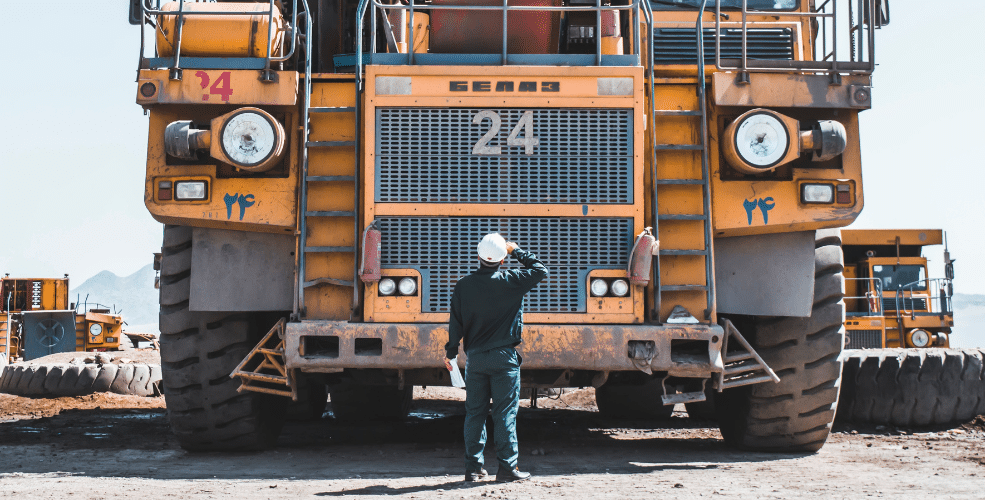Junior vs Major Miners: A beginners guide to investing in mining stocks
Have you ever wondered if mining stocks are a risk you’re willing to take? There are plenty of opinions on each side of the spectrum, but it’s difficult for newcomers to make an informed decision about their security. Whether you’re looking to invest in junior mining stocks or major producing companies, there’s bound to be something for everyone within the industry.
However, if you’re new to investing, or haven’t delved into this space yet, you may wonder why mining stocks are divided into “junior miners” and “major miners”.
It turns out that there is a difference between these types of mining stocks and they don’t all operate mines off the bat. Before you jump into mining stocks that are publicly traded, it helps to know exactly what they are, how they are different from one another, and why you might want to consider investing in both.
In this article, we’re going to break down the differences between junior miners and major miners.
Junior Miners
A junior mining company is defined as a mining company with limited or no assets or operations. They are the little guys, the exploration and development companies that are actively looking for new ore bodies to exploit.
With market values of less than $1 billion, they typically have fewer assets and resources compared to larger companies. However, they also have greater growth potential.
Juniors often have low cash flows and few tangible assets. They have a high propensity to experience wide price fluctuations due to changes in commodity pricing or other variables. Because of this, it is essential to know which stocks will perform best over the long term.
The good thing about junior miners is that there are a lot of potential benefits if you will be able to choose the right company to invest in.
Junior miners are like startups in the tech world. They're often highly speculative, but their stocks can make huge gains if they succeed in finding the right amount of deposits or the right formula for making money once the mine is up and running.
However, junior miners tend to be heavily leveraged and have a limited cash position. This means that a small decline in metal prices could put them at risk of defaulting on debt payments or even bankruptcy. In addition, it means that if the company does begin producing, there isn't a lot of cash left over for dividends or share repurchases.
Therefore, finding the right junior company to invest in is essential, that is, if you don’t want to end up burning money
Major Miners
A major miner is a company that has significant assets in the form of past and present mines. These assets are most often in the form of producing properties, although sometimes they can consist of undeveloped resources.
Moreover, they have a high level of production which can affect the market prices and supply of the mineral they are mining. In fact, some companies like BHP even had a market capitalization of US$180.5 billion as of May 2021. So when can we say that a junior company has become a major one?
Well, for one, you should consider the amount of market revenue that they can make from their reserves.
Most junior companies are in the early stage of development with market caps of $10 million to $50 million. When it exceeds that and has a market capitalization of at least $1 billion, then you can consider a company as major.
Investing in a major company has its perks. These companies provide their shareholders with a high level of security. You'll also find that most major mining companies are significantly undervalued by the stock market and are trading well below their intrinsic values.
Furthermore, there is tremendous growth potential in the industry, which means that the share prices of these stocks should continue to rise over time. On the other hand, there is also some risk involved in investing in major mining companies.
Geopolitical and economic factors can lead to fluctuations in the demand for precious metals and mining stocks. The price of gold, for example, has been on a rollercoaster ride since 2001, peaking at $1,900 per ounce at one point before plunging to $1,000 per ounce in 2008.
The same goes for silver, as its price skyrocketed during the 2008 recession before falling back down to Earth last year.
What To Consider When Choosing Major vs. Junior Miners
With the recent run-up in share price for many junior miners, investors have been quick to jump on board. The question becomes, are these companies worth holding onto?
Before you make a big decision, you must first ascertain if the junior miner that you’ll be investing in has a high chance of becoming a major miner soon.
Here are some of the indicators that a junior miner may become a major one in the future:
Urgent financing
If a junior mining company has no cash and there is not enough time to find another source of funds, then it will be forced to close its doors. If the company is lucky, it can meet with a venture capitalist who will invest in them. This increases the chance of becoming a major miner.
Tapping into resources
If a junior miner has identified resources that no one else has found, they can start drilling and start developing new technologies to be able to extract this new resource. The discovery of new resources is very important in the growth of any business as it increases its chances of becoming a major player in the market.
Strategic acquisitions
Acquiring another company can increase their chances of becoming a major player in the industry by giving them access to new technologies or financial resources which can help them develop their business plan and make them more competitive in the market.
While some spend most of their time trying to decide whether they invest in a major or minor mining company, it's never a bad idea to simply choose to diversify your portfolio. This is the best way to mitigate the common risks of choosing the wrong investment. Each one contributes differently to your portfolio by providing you with exposure to different regions of the world and different commodities.



